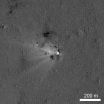(Press-News.org) Glioma is a common name for serious brain tumours. Different types of glioma are usually diagnosed as separate diseases and have been considered to arise from different cell types in the brain. Now researchers at Uppsala University, together with American colleagues, have shown that one and the same cell of origin can give rise to different types of glioma. This is important for the basic understanding of how these tumours are formed and can contribute to the development of more efficient and specific glioma therapies. The results have been published in Journal of Neuroscience.
The most common primary, malignant brain tumours in adults, called glioma, are formed from cells in the brain that are not nerve cells. These are serious tumours that lack efficient treatment and relapses are common. There are different types of glioma, classified according to an established system based on which cell type the tumour arises from. The most common gliomas are astrocytoma, which have their name from astrocytes, and oligodendroglioma, which are believed to arise from oligodendrocytes. Patients with astrocytoma have a poorer prognosis than oligodendroglioma patients, and the two tumour types are considered separate clinical diagnoses.
"Since the tumour types look different and have different prognoses it has been assumed that they arise from different cells of origin in the brain, but the fact is that the exact cell of origin has not been determined for any glioma. We have for a long time been interested in finding out more about the origin of gliomas and how it is associated with the genetic alterations that cause the tumour", says Lene Uhrbom, researcher at the Department of Immunology, Genetics and Pathology, who has led the study.
In collaboration with colleagues in the United States, Lene Uhrbom's research group has studied glioma development in mice. Using tumour models for both astrocytoma and oligodendroglioma, which are very similar to human tumours, they could show that one and the same cell type, called oligodendrocyte precursor cells, could give rise to both tumour forms.
The researchers discovered that it is not the cell of origin but rather the genetic aberrations that control which tumour type is formed. By analysing gene activity in a large number of human astrocytoma and oligodendroglioma they could also conclude that the tumours are more similar to one another than was previously believed. This supports their finding that the glioma diagnoses can have the same origin.
"We saw that the same kind of more differentiated cell of origin, which has previously only been shown to give rise to oligodendroglioma, also can give rise to astrocytoma. New findings such as these increase our understanding of the basic mechanisms that cause glioma", says Lene Uhrbom.
INFORMATION:
For more information contact Lene Uhrbom, e-mail: lene.uhrbom@igp.uu.se, tel +46 18 471 5063
More about glioma and the cell of origin for cancer
Glioma is a serious disease that lacks efficient treatment. By learning more about the basic mechanisms that control glioma development and the biology of glioma cells we will improve our chances of finding new, tumour specific strategies for preventing these cells from growing. The cell of origin for cancer contributes to the characteristics of the cancer cells and is the reason for that there are many different cancer forms, e.g breast cancer and prostate cancer, with different biological and clinical features. For most cancers the exact cell of origin is still unknown. This is mainly due to that this is a difficult field to study since human tumours are in a late developmental stage when they are discovered and by then the origin is impossible to determine. This is why relevant mouse models must be used, to be able to control and follow the disease course.
New findings show that different brain tumors have the same origin
2014-10-28
ELSE PRESS RELEASES FROM THIS DATE:
Adolescent binge drinking reduces brain myelin, impairs cognitive and behavioral control
2014-10-28
AMHERST, Mass. – Binge drinking can have lasting effects on brain pathways that are still developing during adolescence, say neuroscience researcher Heather N. Richardson and her colleagues at the University of Massachusetts Amherst and Louisiana State University. Results of their study using a rodent model of adolescent drinking appear in the October 29 issue of The Journal of Neuroscience.
Richardson says, "Adverse effects of this physical damage can persist long after adolescent drinking ends. We found that the effects of alcohol are enduring." She adds, "The ...
Animal study suggests heavy drinking in adolescence associated with lasting brain changes
2014-10-28
WASHINGTON, DC — Heavy drinking during adolescence may lead to structural changes in the brain and memory deficits that persist into adulthood, according to an animal study published October 29 in The Journal of Neuroscience. The study found that, even as adults, rats given daily access to alcohol during adolescence had reduced levels of myelin — the fatty coating on nerve fibers that accelerates the transmission of electrical signals between neurons. These changes were observed in a brain region important in reasoning and decision-making. Animals that were ...
NASA's LRO spacecraft captures images of LADEE's impact crater
2014-10-28
NASA's Lunar Reconnaissance Orbiter (LRO) spacecraft has spied a new crater on the lunar surface; one made from the impact of NASA's Lunar Atmosphere and Dust Environment Explorer (LADEE) mission.
"The Lunar Reconnaissance Orbiter Camera (LROC) team recently developed a new computer tool to search Narrow Angle Camera (NAC) before and after image pairs for new craters, the LADEE impact event provided a fun test, said Mark Robinson, LROC principal investigator from Arizona State University in Tempe. "As it turns there were several small surface changes found in the predicted ...
Modeling cancer: Virginia Tech researchers prove models can predict cellular processes
2014-10-28
How does a normal cellular process derail and become unhealthy?
A multi-institutional, international team led by Virginia Tech researchers studied cells found in breast and other types of connective tissue and discovered new information about cell transitions that take place during wound healing and cancer.
The results were published in a September issue of the journal Science Signaling.
During development, cells change forms and regroup from tight packs of epithelial cells to more mobile, loose arrays of mesenchymal cells.
The cell changes, known as an epithelial ...
The effect of statins influenced by gene profiles
2014-10-28
Montreal, October 28, 2014 – The Montreal Heart Institute Research Centre is once again pushing the limits of knowledge in personalized medicine. A meta-analysis combining the results of several pharmacogenomic studies and involving over 40,000 research subjects now makes it possible to demonstrate a different response to statins according to the patient's gene profile. This important contribution of two Montreal researchers from the Montreal Heart Institute (MHI), Dr. Jean-Claude Tardif, Director of the Research Centre and Dr. Marie-Pierre Dubé, Director of ...
Fewer women than men receive hemodialysis treatment
2014-10-28
Fewer women than men are treated with dialysis for end-stage kidney disease, according to a new comprehensive analysis of sex-specific differences in treatment published this week in PLOS Medicine. The results of the study, conducted by Manfred Hecking with Friedrich Port and colleagues from Arbor Research Collaborative for Health in Ann Arbor, Michigan, suggest that these findings call for further detailed study for the reasons underlying the sex-specific differences in end-stage renal disease treatment.
Chronic kidney disease often progresses to end-stage renal disease, ...
Injury prevention intervention cuts distracted driving in half, say trauma surgeons
2014-10-28
SAN FRANCISCO: A simple intervention designed to raise awareness about the use of communication devices while driving reduced the incidence of distracted driving by 50 percent in hospital personnel, according to findings from a single site study presented today at the 2014 Clinical Congress of the American College of Surgeons.
Driving distracted–caused by any activity that steals a driver's attention from the road–is at an all-time high. In 2012, an estimated 421,000 people were injured in accidents involving distracted driving and 3,328 were killed as a result ...
Giant tortoises gain a foothold on a Galapagos Island
2014-10-28
A population of endangered giant tortoises, which once dwindled to just over a dozen, has recovered on the Galapagos island of Española, a finding described as "a true story of success and hope in conservation" by the lead author of a study published today (Oct. 28).
Some 40 years after the first captive-bred tortoises were reintroduced to the island by the Galapagos National Park Service, the endemic Española giant tortoises are reproducing and restoring some of the ecological damage caused by feral goats that were brought to the island in the late 19th century. ...
Text messages could be useful tool in fight against malaria
2014-10-28
New Haven, CT, Oct. 28 2014 – Each year, malaria kills over 600,000 people, more than half of them children. In a study published today in PLOS ONE , researchers with the non-profit Innovations for Poverty Action (IPA) and Harvard University found that simple text message reminders to take malaria medication can help in the fight against the disease by boosting the rates at which patients complete their medication regimen.
One challenge in fighting malaria is that the disease has evolved resistance to many drugs that formerly worked, according to Julia Raifman, ...
Pair bonding reinforced in the brain
2014-10-28
This news release is available in German.
In addition to their song, songbirds also have an extensive repertoire of calls. While the species-specific song must be learned as a young bird, most calls are, as in the case of all other birds, innate. Researchers at the Max Planck Institute in Seewiesen have now discovered that in zebra finches the song control system in the brain is also active during simple communication calls. This relationship between unlearned calls and an area of the brain responsible for learned vocalisations is important for understanding the ...




